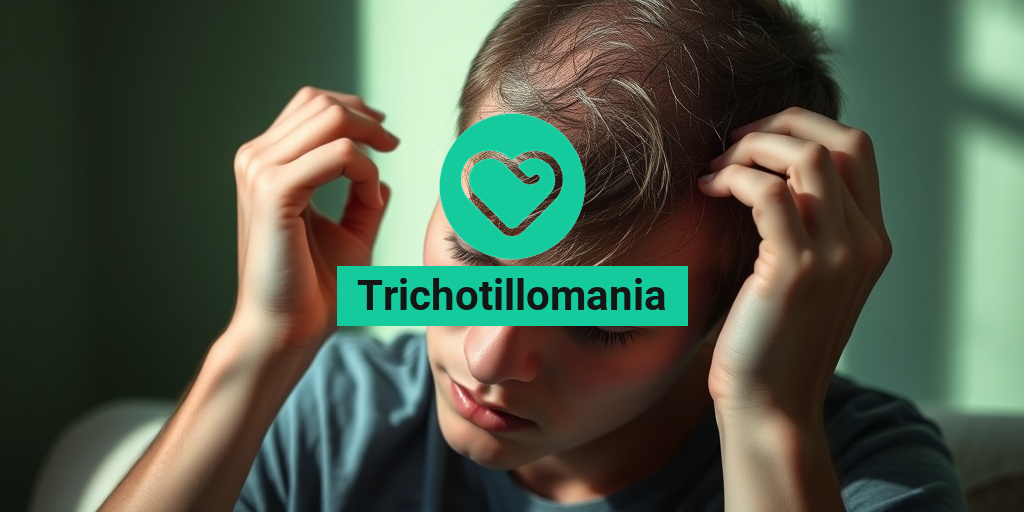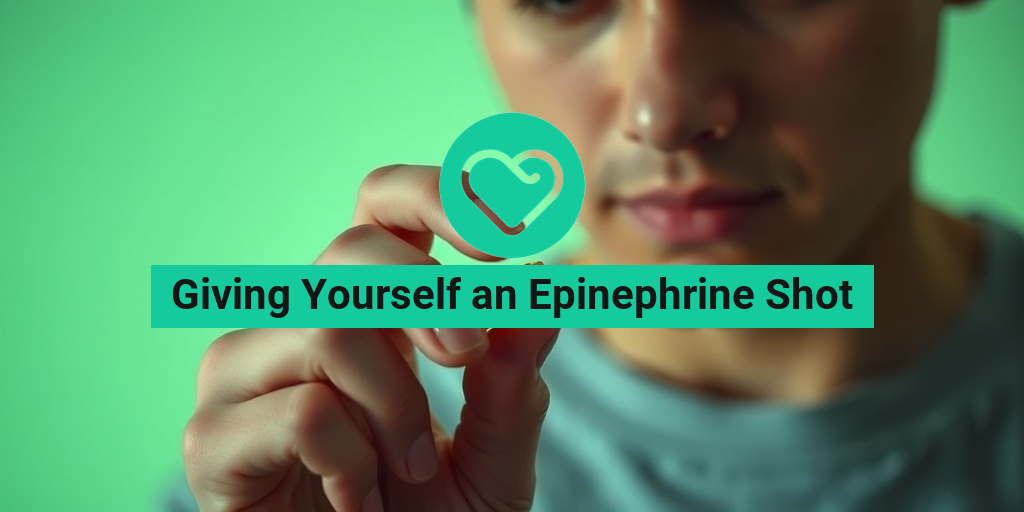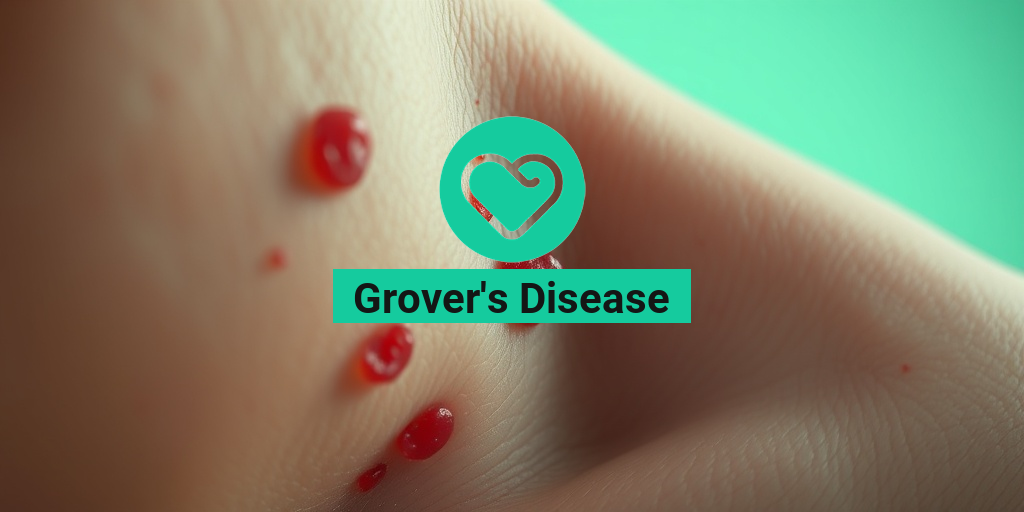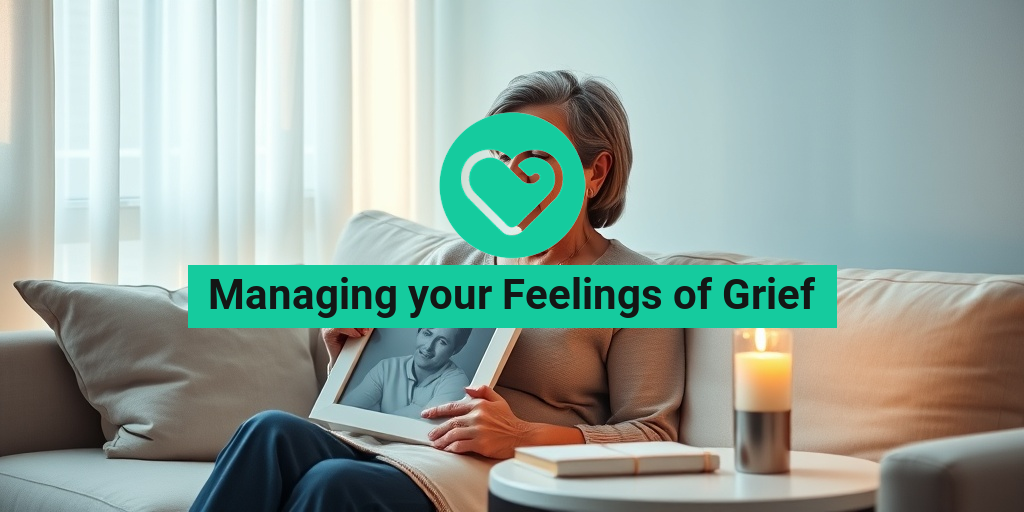What Is Trichotillomania?
Trichotillomania, often referred to as hair-pulling disorder, is a mental health condition characterized by the compulsive urge to pull out one’s hair. This behavior can affect any area of the body where hair grows, including the scalp, eyebrows, and eyelashes. For many individuals, this condition is not just a habit but a way to cope with stress, anxiety, or other emotional challenges.
First identified in the late 19th century, trichotillomania is classified as a body-focused repetitive behavior (BFRB). It is often associated with other mental health disorders, such as obsessive-compulsive disorder (OCD) and attention-deficit/hyperactivity disorder (ADHD). Understanding trichotillomania is crucial for those affected, as it can significantly impact one’s self-esteem and overall quality of life.
Understanding the Causes
The exact cause of trichotillomania remains unclear, but several factors may contribute to its development:
- Genetic Factors: There may be a hereditary component, as individuals with a family history of BFRBs are more likely to develop trichotillomania.
- Environmental Triggers: Stressful life events, trauma, or significant changes can trigger hair-pulling behaviors.
- Psychological Factors: Many individuals report that hair-pulling serves as a coping mechanism for anxiety or boredom.
Trichotillomania Symptoms
Recognizing the symptoms of trichotillomania is essential for early intervention and treatment. The symptoms can vary widely among individuals, but some common signs include:
Compulsive Hair Pulling
The most prominent symptom is the compulsive urge to pull out hair. This can occur in various situations, such as during moments of stress, boredom, or even while watching television. Some individuals may pull hair without even realizing it.
Hair Loss and Damage
As a result of the pulling, individuals may experience noticeable hair loss. This can lead to bald patches on the scalp, thinning eyebrows, or missing eyelashes. The physical appearance can significantly affect self-esteem and body image.
Emotional Distress
Many people with trichotillomania experience feelings of shame, guilt, or embarrassment about their behavior. This emotional distress can lead to social withdrawal and avoidance of situations where hair loss may be visible.
Attempts to Stop
Individuals often try to stop pulling their hair but find it challenging to do so. This struggle can lead to frustration and a sense of helplessness, further exacerbating the condition.
Associated Behaviors
Some individuals may engage in other related behaviors, such as skin picking or nail biting. These behaviors often coexist with trichotillomania and can complicate the overall treatment approach.
Seeking Help
If you or someone you know is struggling with trichotillomania, it’s important to seek help. Treatment options may include therapy, such as cognitive-behavioral therapy (CBT), which has shown effectiveness in managing symptoms. Additionally, support groups and online communities, like those found on Reddit, can provide valuable insights and encouragement.
For more comprehensive information and resources, consider visiting Yesil Health AI, where you can find evidence-based health answers tailored to your needs.
In conclusion, understanding trichotillomania is the first step toward managing this challenging condition. By recognizing the symptoms and seeking appropriate help, individuals can work towards recovery and reclaim their confidence. Remember, you are not alone in this journey! 🌟
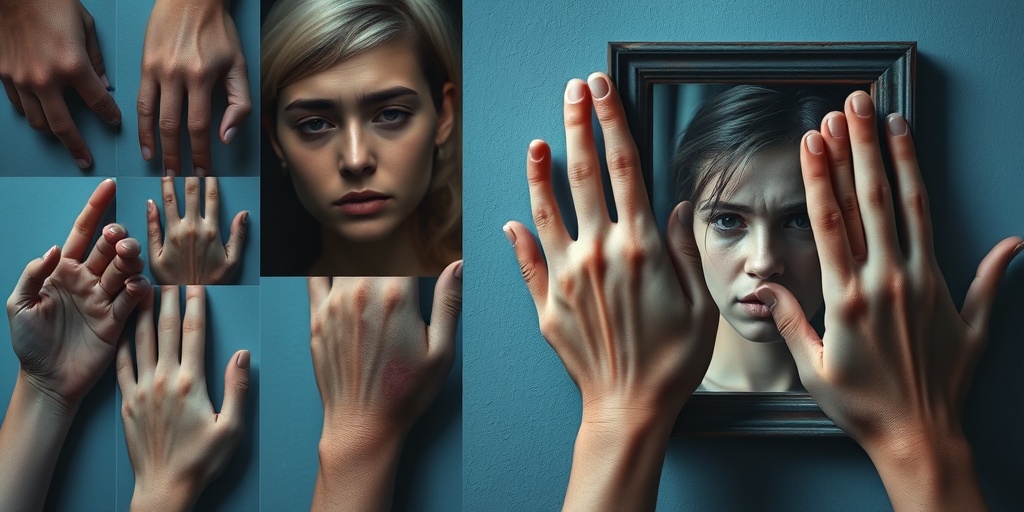
Causes of Trichotillomania
Trichotillomania, often referred to as hair-pulling disorder, is a complex condition that can significantly impact an individual’s life. Understanding the causes of trichotillomania is crucial for effective treatment and management. While the exact cause remains unclear, several factors contribute to the development of this disorder.
Genetic Factors
Research suggests that genetics may play a role in trichotillomania. Individuals with a family history of obsessive-compulsive disorder (OCD) or other related conditions may be more susceptible to developing this disorder. Genetic predisposition can influence how the brain processes emotions and stress, potentially leading to hair-pulling behaviors.
Environmental Triggers
Environmental factors can also contribute to the onset of trichotillomania. Stressful life events, such as trauma, loss, or significant changes, can trigger hair-pulling episodes. Many individuals report that their symptoms worsen during periods of high stress or emotional turmoil. Recognizing these triggers is essential for managing the condition effectively.
Psychological Factors
Trichotillomania is often associated with other mental health conditions, such as anxiety disorders, depression, and OCD. The urge to pull hair may serve as a coping mechanism for dealing with negative emotions or anxiety. Understanding the psychological aspects of trichotillomania can help individuals develop healthier coping strategies.
Neurological Factors
Some studies suggest that trichotillomania may be linked to neurological factors, particularly in how the brain processes rewards and impulses. Individuals with this disorder may have differences in brain structure or function that affect their ability to control urges. This neurological perspective highlights the complexity of trichotillomania and the need for comprehensive treatment approaches.
Risk Factors for Trichotillomania
Identifying the risk factors for trichotillomania can help in early detection and intervention. While anyone can develop this disorder, certain factors may increase the likelihood of its onset.
Age and Gender
Trichotillomania typically begins in childhood or adolescence, with many individuals reporting symptoms before the age of 17. Interestingly, the disorder is more prevalent in females than in males, with studies indicating that women are more likely to seek treatment. Understanding these demographic trends can aid in awareness and education efforts.
Co-occurring Mental Health Conditions
Individuals with a history of anxiety disorders, depression, or OCD are at a higher risk of developing trichotillomania. The presence of these conditions can exacerbate hair-pulling behaviors, making it essential to address all underlying mental health issues during treatment.
Personality Traits
Certain personality traits may also contribute to the risk of developing trichotillomania. Individuals who are perfectionists, have high levels of anxiety, or struggle with impulse control may be more susceptible to engaging in hair-pulling behaviors. Recognizing these traits can help in tailoring therapeutic approaches to individual needs.
Family History
A family history of trichotillomania or related disorders can increase the risk of developing the condition. If a close relative has experienced hair-pulling behaviors, it may indicate a genetic predisposition. This knowledge can be beneficial for individuals and families seeking to understand the disorder better.
Stressful Life Events
Experiencing significant stress or trauma can act as a catalyst for trichotillomania. Events such as parental divorce, bullying, or the death of a loved one can trigger hair-pulling behaviors as a coping mechanism. Recognizing these stressors is vital for developing effective management strategies.
In conclusion, understanding the causes and risk factors of trichotillomania is essential for those affected by the disorder. By recognizing the interplay of genetic, environmental, psychological, and neurological factors, individuals can seek appropriate treatment and support. If you or someone you know is struggling with trichotillomania, reaching out to a mental health professional can be a crucial step towards recovery. 🌱
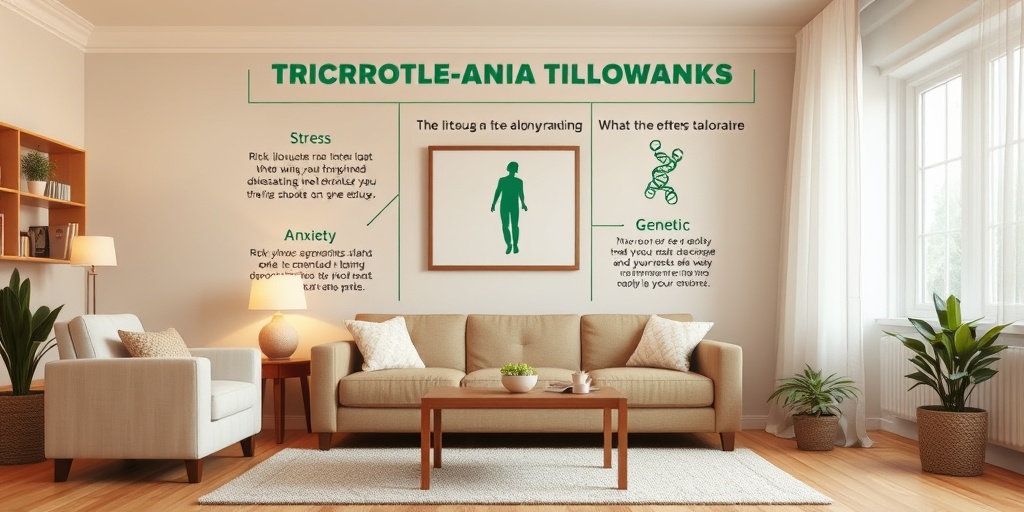
Diagnosing Trichotillomania
Trichotillomania, often referred to as hair-pulling disorder, is a mental health condition characterized by the compulsive urge to pull out one’s hair, leading to noticeable hair loss. Diagnosing this condition can be complex, as it often overlaps with other mental health disorders. Here’s a closer look at how healthcare professionals diagnose trichotillomania.
Understanding the Symptoms
The first step in diagnosing trichotillomania is recognizing its symptoms. Individuals may experience:
- Compulsive Hair Pulling: This is the hallmark symptom, where individuals pull hair from their scalp, eyebrows, eyelashes, or other body areas.
- Hair Loss: Noticeable bald patches or thinning hair can occur as a result of the pulling.
- Emotional Distress: Many individuals feel a sense of shame or embarrassment about their behavior, which can lead to anxiety or depression.
- Attempts to Stop: Individuals often try to stop pulling but find it difficult, leading to frustration.
Clinical Assessment
To diagnose trichotillomania, a mental health professional will typically conduct a thorough clinical assessment. This may include:
- Clinical Interview: The clinician will ask about the individual’s hair-pulling behavior, emotional triggers, and any co-occurring mental health issues, such as OCD or ADHD.
- Diagnostic Criteria: The clinician will refer to the Diagnostic and Statistical Manual of Mental Disorders (DSM-5), which outlines specific criteria for diagnosing trichotillomania.
- Self-Report Questionnaires: These tools can help gauge the severity of the condition and its impact on daily life.
Exclusion of Other Conditions
It’s essential to rule out other conditions that may cause similar symptoms, such as:
- Alopecia Areata: An autoimmune condition that causes hair loss.
- Dermatillomania: Compulsive skin picking, which can occur alongside trichotillomania.
- Other Mental Health Disorders: Conditions like anxiety or depression may also contribute to hair-pulling behaviors.
Once a diagnosis is made, individuals can explore various treatment options to manage their symptoms effectively.
Trichotillomania Treatment Options
Treating trichotillomania can be challenging, but several effective options are available. The right treatment plan often depends on the individual’s specific needs and the severity of their symptoms.
Therapeutic Approaches
One of the most common treatment methods for trichotillomania is therapy. Here are some therapeutic approaches that have shown promise:
- Cognitive Behavioral Therapy (CBT): This evidence-based approach helps individuals identify and change negative thought patterns and behaviors associated with hair pulling.
- Habit Reversal Training: A component of CBT, this technique teaches individuals to recognize the urge to pull hair and replace it with a competing response.
- Acceptance and Commitment Therapy (ACT): This therapy focuses on accepting thoughts and feelings rather than fighting them, helping individuals commit to behavior changes.
Medication Options
In some cases, medication may be prescribed to help manage symptoms. While there is no specific medication for trichotillomania, certain types may help, including:
- Selective Serotonin Reuptake Inhibitors (SSRIs): These antidepressants can help alleviate symptoms of anxiety and depression that may accompany trichotillomania.
- Clomipramine: A tricyclic antidepressant that has shown effectiveness in treating obsessive-compulsive behaviors.
Support Groups and Resources
Connecting with others who understand the challenges of trichotillomania can be incredibly beneficial. Support groups, both in-person and online (like those found on Reddit), provide a platform for sharing experiences, coping strategies, and encouragement. Resources such as the Trichotillomania Learning Center offer valuable information and support for individuals and their families.
Ultimately, the journey to managing trichotillomania is unique for each individual. With the right support and treatment, many people find ways to cope with their urges and lead fulfilling lives. 🌟

Managing Trichotillomania at Home
Trichotillomania, often referred to as hair-pulling disorder, is a mental health condition that can significantly impact daily life. However, there are several strategies you can implement at home to help manage this condition effectively. Here are some practical tips to consider:
1. Create a Supportive Environment
One of the first steps in managing trichotillomania at home is to create an environment that minimizes triggers. This can include:
- Identifying Triggers: Keep a journal to note when and where you feel the urge to pull hair. Understanding your triggers can help you avoid them.
- Reducing Stress: Engage in activities that promote relaxation, such as yoga, meditation, or deep-breathing exercises. Stress is a common trigger for many individuals with trichotillomania.
2. Substitute with Healthy Alternatives
Finding alternative behaviors can be a powerful way to manage urges. Consider the following:
- Fidget Toys: Use stress balls, fidget spinners, or other tactile objects to keep your hands busy.
- Mindfulness Techniques: Practice mindfulness or grounding techniques to redirect your focus when you feel the urge to pull.
3. Establish a Routine
Having a structured daily routine can help reduce anxiety and the compulsion to pull hair. Here’s how:
- Set Specific Times: Allocate specific times for self-care and relaxation, ensuring you have moments to unwind.
- Incorporate Physical Activity: Regular exercise can help reduce stress and improve your mood, making it easier to manage urges.
4. Seek Online Support
Connecting with others who understand your experience can be incredibly beneficial. Consider:
- Online Forums: Websites like Reddit have communities where individuals share their experiences and coping strategies related to trichotillomania.
- Virtual Support Groups: Look for online support groups that focus on hair-pulling disorders. Sharing your journey can provide comfort and insights.
Living with Trichotillomania
Living with trichotillomania can be challenging, but understanding the condition and finding ways to cope can lead to a more fulfilling life. Here are some insights into living with this disorder:
1. Understanding the Condition
Trichotillomania is often linked to other mental health issues, such as OCD and ADHD. Recognizing that you are not alone in this struggle can be empowering. Many individuals experience similar feelings and challenges.
2. Embracing Self-Compassion
It’s essential to practice self-compassion while living with trichotillomania. Here are some ways to cultivate a kinder relationship with yourself:
- Acknowledge Your Feelings: It’s okay to feel frustrated or embarrassed about your condition. Allow yourself to feel these emotions without judgment.
- Celebrate Small Wins: Recognize and celebrate your progress, no matter how small. Each step towards managing your urges is a victory.
3. Educating Yourself and Others
Knowledge is power. Educating yourself about trichotillomania can help you understand your condition better and explain it to others. Consider:
- Reading Books and Articles: There are numerous resources available that provide insights into trichotillomania and effective coping strategies.
- Sharing Information: Help friends and family understand your condition by sharing articles or resources. This can foster empathy and support.
4. Professional Help
While managing trichotillomania at home is beneficial, seeking professional help can provide additional support. Therapists specializing in cognitive-behavioral therapy (CBT) can offer tailored strategies to help you cope with urges and underlying issues.
Living with trichotillomania is a journey that requires patience and understanding. By implementing these strategies and seeking support, you can navigate the challenges of this condition and lead a fulfilling life. 🌟
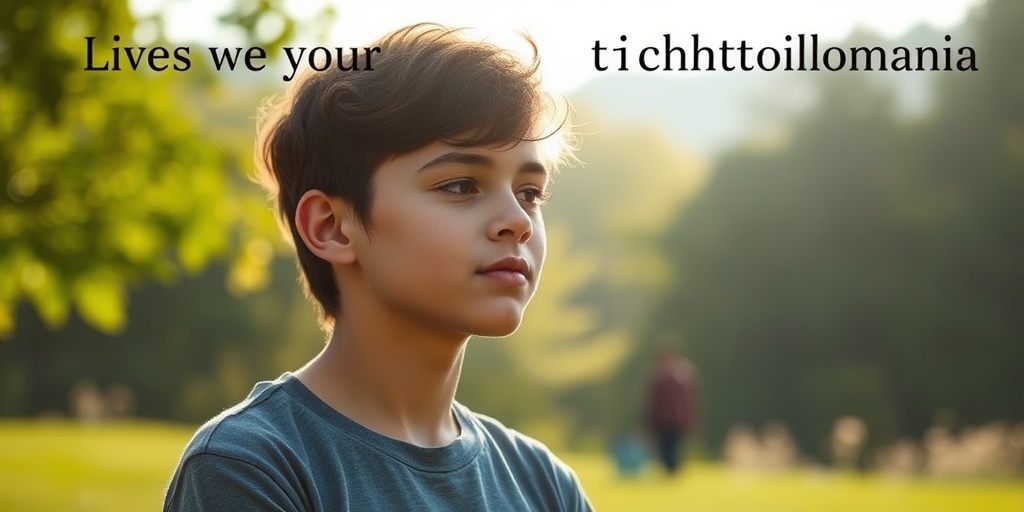
Frequently Asked Questions about Trichotillomania
What is Trichotillomania?
Trichotillomania is a mental health condition characterized by the compulsive urge to pull out one’s hair, leading to noticeable hair loss. This behavior can affect any area of the body, including the scalp, eyebrows, and eyelashes. It is often classified as a type of obsessive-compulsive disorder (OCD).
What are the symptoms of Trichotillomania?
- Compulsive hair pulling
- Visible hair loss
- Feelings of tension before pulling hair
- Sense of relief or pleasure after pulling
- Attempts to stop pulling without success
How is Trichotillomania treated?
Treatment for trichotillomania often includes a combination of therapy and medication. Cognitive-behavioral therapy (CBT) is particularly effective, helping individuals understand and change their hair-pulling behaviors. In some cases, medications such as selective serotonin reuptake inhibitors (SSRIs) may be prescribed.
Can Trichotillomania affect my eyelashes and eyebrows?
Yes, individuals with trichotillomania may pull hair from various areas, including eyelashes and eyebrows. This can lead to significant cosmetic concerns and emotional distress.
Is there a cure for Trichotillomania?
While there is no definitive cure for trichotillomania, many individuals find relief through therapy and support. With the right treatment plan, symptoms can be managed effectively.
How can I find support for Trichotillomania?
Support groups, both online and in-person, can be beneficial for those dealing with trichotillomania. Websites like Reddit have communities where individuals share their experiences and coping strategies. Connecting with others who understand the challenges can provide comfort and encouragement.
What is the relationship between Trichotillomania and ADHD?
Research suggests that there may be a link between trichotillomania and attention-deficit/hyperactivity disorder (ADHD). Individuals with ADHD may be more prone to developing compulsive behaviors, including hair pulling.
How can I pronounce Trichotillomania?
The pronunciation of trichotillomania is typically broken down as: trih-koh-till-oh-MAY-nee-uh.
Where can I learn more about Trichotillomania?
For more information, consider visiting reputable mental health websites, consulting with a healthcare professional, or joining online forums dedicated to trichotillomania support.

